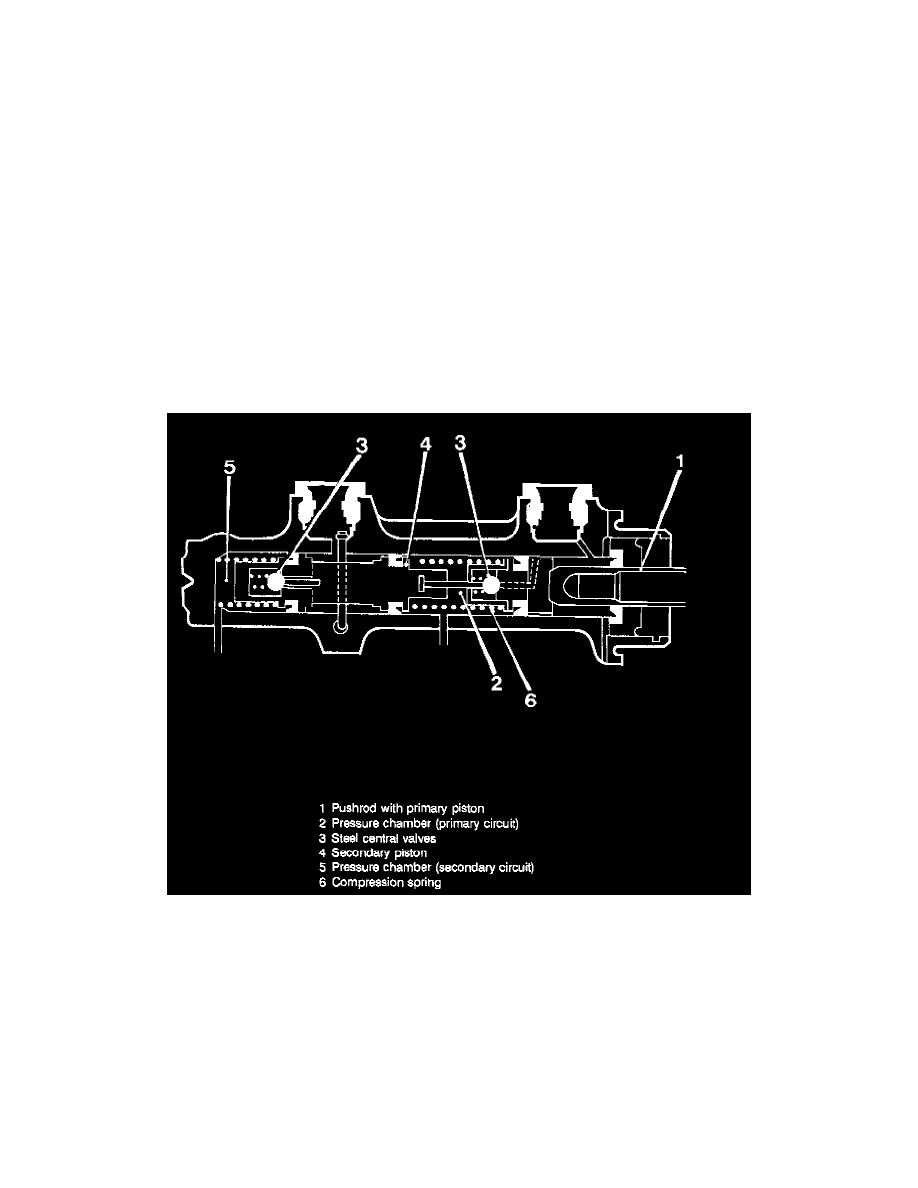9000 Hatchback L4-2290cc 2.3L DOHC Turbo EFI (1994)

Electric Motor
The electric motor which drives the pump is a D.C. motor with a built in speed sensor so the the Electronic Control Unit (ECU) can receive information
to the effect that the pump motor is running
The motor can be replaced only as a complete unit with the pump and valve block.
Hydraulic Pump
The pump unit delivers the necessary extra volume of fluid under Antilock Brake System (ABS) control to the brake circuits.
The pressure on the additional brake fluid flow is determined by the brake pressure in the master cylinder, which in turn is proportional to the pedal force
applied.
The pressure during normal braking modulation is around 80 to 100 bar. The pressure almost never exceeds 100 bar. The electric motor and pump have
capacity to spare so that they can always produce sufficient volume and pressure in all braking situations
The hydraulic pump can be replaced only as a complete unit with the pump and valve block.
Master Cylinder
The master cylinder consists of a tandem cylinder made of aluminum.
The cylinder incorporates two pistons: a primary piston (next to the brake pedal) and a secondary piston.
A return spring for these pistons is also fined. The master cylinder has connections for two brake lines and two hoses from the brake fluid reservoir.
Two central valves open the port to the brake fluid reservoir in the brakes off position so that the sealing rings are not damaged during braking when
Antilock Brake System (ABS) is activated. These central valves replace cut-off ports to prevent damage to the sealing rings when ABS is activated. The
central valves are made of steel to withstand the high pressure in the master cylinder.
Valve Block
